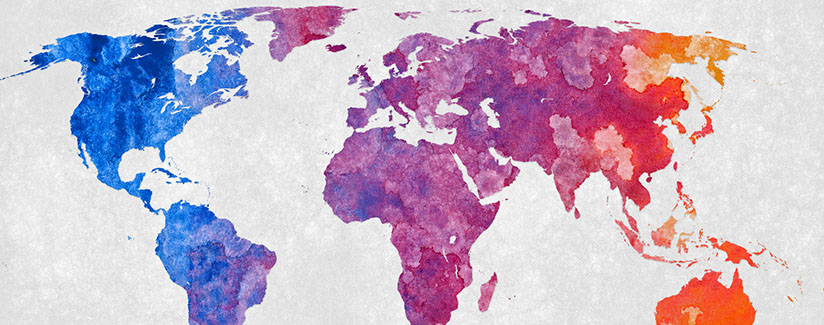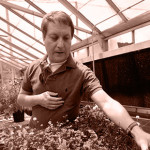
How do GMOs Affect the Environment?
We’ve read it in magazines, seen it on internet news sites, and maybe even watched a segment discussing it on afternoon television. GMOs, genetically modified organisms, biotechnology, or even ‘frankenfood,’ as some like to call it, have certainly raised a lot of questions.
You’ve shared your concerns and asked questions about GMOs with us, and we’ve gathered experts and resources to answer them. This post continues our series focused on GMOs for the month of August 2011. To read all related posts in the series, click here. This week, we’re focused on the environmental impacts of GMO crops.
What impact do GMOs have on the environment?
Do GMOs contaminate other crops? Do they use a lot of pesticides and other chemicals? Don’t GMOs decrease biodiversity? We reached out to the following experts for answers.
- Dr. Peggy Lemaux, Cooperative Extension Specialist at the University of California – Berkeley
- Dr. Wayne Parrott, Professor in the Department of Crop and Soil Sciences College of Agricultural & Environmental Sciences, University of Georgia
- Dr. Martina Newell-McGloughlin, Director, University of California Systemwide Biotechnology Research and Education Program (UCBREP), Co-Director, National Institutes of Health Training Program in Biomolecular Technology, Co-Director, NSF IGERT CREATE Training Program, and Adjunct Associate Professor, Department of Plant Pathology at the University of California-Davis.
- Dr. Alison Van Eenennaam, Cooperative Extension Specialist, Animal Genomics and Biotechnology, University of California-Davis.
We saw in the documentary Food, Inc. that GMOs contaminate other crops. Is this true?
Dr. Newell-McGloughlin:
No. Within the documentary, every case that was tried for infringement was proven in court to be an intentional infringer. In Hawaii, organic farmers are growing biotech crops around their organic products to protect them against viral infection. In this case, there is a positive for co-existence of biotech crops with organic production systems.
There are many methods that are used to ensure purity of crops that use GMO technology. In fact, for many years, individuals involved in producing crops for specific markets have introduced detailed requirement to ensure that there is no cross-contamination. These methods are in place for those who are looking for higher value for their specific product, such as certified seed production and organic production. However, it is important to look at these methods to determine the costs and benefits of the actual production system as a whole. Everyone should be able to use the optimum production system for their particular crop product.
Dr. Lemaux:
Achieving 100% purity for any agricultural commodity is a practical impossibility given the nature of our food system, the reproductive biology of plants, and the highly sensitive detection methods available to identify the genetic material used to create genetically-modified crops. With that said, however, growers have developed strategies to grow and market varieties grown with different production methods and still achieve particular purity standards. When GM crops are grown next to organic farming operations, certain practices, , like spatial separation of fields, staggered planting dates, and planting varieties with different maturity dates, limit gene flow. To avoid mixing varieties, crops must also be segregated during harvest, shipping, and processing.
Don’t GMO crops use a lot of pesticides and other chemicals?
Dr. Newell-McGloughlin:
This is a good question. An economists’ study a couple years ago determined that pesticides’ footprint is down by about 35% for corn and 25% for cotton. In addition, there is a reduction in carbon dioxide emissions of 286 million kilograms. This is because herbicide-tolerant seeds (which create herbicide-tolerant plants) allow farmers to practice no-till agriculture – that is, they don’t have to plow the land (which causes carbon dioxide to be released). This also means the soil integrity is retained so the organic matter is much healthier, there is less soil compaction because you’re not driving over the land, and water usage is better because it is being retained in the soil. As well, because you’re not driving over the land, fuel usage is lower. In fact, fuel usage is estimated to be about 20 gallons less per acre.
Dr. Parrott:
No farmer likes to buy and use pesticides just for the sake of it – every chemical bought reduces the farmer’s profit. Because of insecticide-resistant corn and cotton, we’re not using as many insecticides in the environment as we were before, nor are we losing as much pre-harvest yield as we were before. Lower insecticide use and less yield loss translate into additional profits. The reduction in the amount of herbicides used has not been as dramatic as the decrease in insecticide use, but the type of herbicides being used now are very different from those used in the past. They are much more environmentally friendly, so even if the amount has not changed much, the environmental impact has decreased significantly.
Dr. Lemaux:
In reality, having crops that can tolerate herbicides and pest attacks increases pest management options and can also reduce the number and strength of pesticide applications. Growth of GM herbicide-tolerant crops also allows topical application of herbicides to crops and weeds, which replaces mechanical removal of weeds, which can damage crops. Reducing mechanical tillage lowers fuel consumption and helps conserve soils prone to erosion and compaction.
Do GMOs decrease biodiversity?
Dr. Newell-McGloughlin:
This is a contentious issue. There was a study conducted years ago by Dr. Greene from the Royal Society of Bird Protection…if you are looking at a high yield system, one that produces more food with less resources, then you can be more land-free for wildlife, and thus biodiversity. So he concluded this method is friendlier than the inefficient land use of farming where you use wildlife areas.
Dr. Parrott:
Quite the opposite. A lot of bird species returned to cotton fields as soon as GM cotton replaced conventional insecticides. Before GM cotton, birds were eating insecticide-laden insects and dying as a result. But, there is more to biodiversity than just birds. This summer we had some field days comparing GM and conventional corn. The GM corn was teeming with beneficial animals – lady bugs, frogs, spiders, snails, etc. In contrast, the conventional corn was essentially a biological desert after each insecticide application.
Are GE Foods from animals safe for the environment?
Dr. Van Eenennaam:
There are currently no GE animals approved for food production. Recently there has been a lot of publicity about the so-called “Frankenfish”, a fast-growing salmon that achieves market size in about half the time it takes for a non-genetically engineered salmon to get to market weight. The AquAdvantage salmon has been involved in regulatory proceedings for the past 15 years. The FDA has reviewed the safety of the meat from the fish, as well as the safety of the proposed land-based production of sterile, female fish to the environment. The FDA experts concluded that given the containment measures proposed by the company and the way the fish will be grown, it is safe to eat and will pose no threat to the environment.
The fast-growing AquAdvantage salmon will be grown out in tanks on land. Additionally all of the production fish will be sterile females to genetically contain the GE fish in case of any potential release or escape. Such fish would be unable to breed with wild salmon populations. There are a number of redundant mechanisms proposed to contain these genetically-engineered fish and to ensure that their only purpose is to be used as food for consumption.
We also talked to environmental scientist and plant biologist, Cecilia Chi-Ham from the University of California-Davis.
“World Map – Abstract Acrylic” by Nicolas Raymond is licensed under CC BY.





























